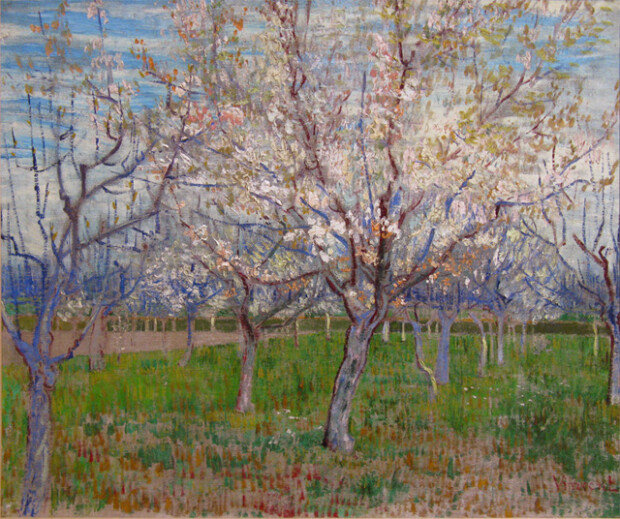Eternal spring
Eternal spring
Posted April. 09, 2020 07:41,
Updated April. 09, 2020 07:41

For those who live in warm climate all year round, spring may not be a big deal. It is, however, much coveted and long-waited for those enduring long and cold winters. For Vincent van Gogh,
life in Paris was cold and brutal. Eventually he packed his belongings and headed to Alres in search for warm sunshine and colors.
On Feb. 20, 1888, Gogh arrived in a snowy Arles. But a few weeks later, spring arrived and trees in orchards became covered with flowers. Enraptured by flowers on fruit trees, Gogh spent much of his time drawing them. He completed 14 series of paintings in Arles in April alone.
This painting was the first he completed, depicting a landscape of an orchard blooming with pink apricot flowers. Flowers are in full bloom, although there are a few that are still in buds. Quick brush touches, use of bright and varied colors, snapshot composition are some of the typical Impressionist techniques used, but petals are depicted in the signature Gogh way; shining brightly like flames against the sunlight. The orchard in full bloom gave passion and vitality to Gogh. “It’s one of the themes that give people vitality,” he wrote in a letter to his brother, Theo, and hoped that the paintings would sell well.
Unfortunately the paintings were not sold, but his time in Arles was one of the most radiant springs in his lifetime. Though it did not end well, Gogh had been happy living with Paul Gaugain and completed around 200 paintings. He still suffered from bipolar disorder, cut off his ear, but created masterpieces of his life in Arles.
Flowers do not bloom forever. According to Theo, Gogh had been a person “with a warm heart, someone who always tried to help others.” He lived a short life of 37 years, but he left behind depiction of eternal springtime. The flowers in full bloom in his painting are perhaps the flowers of happiness and hope that he yearned so much during his life.
tjdrud0306@donga.com







